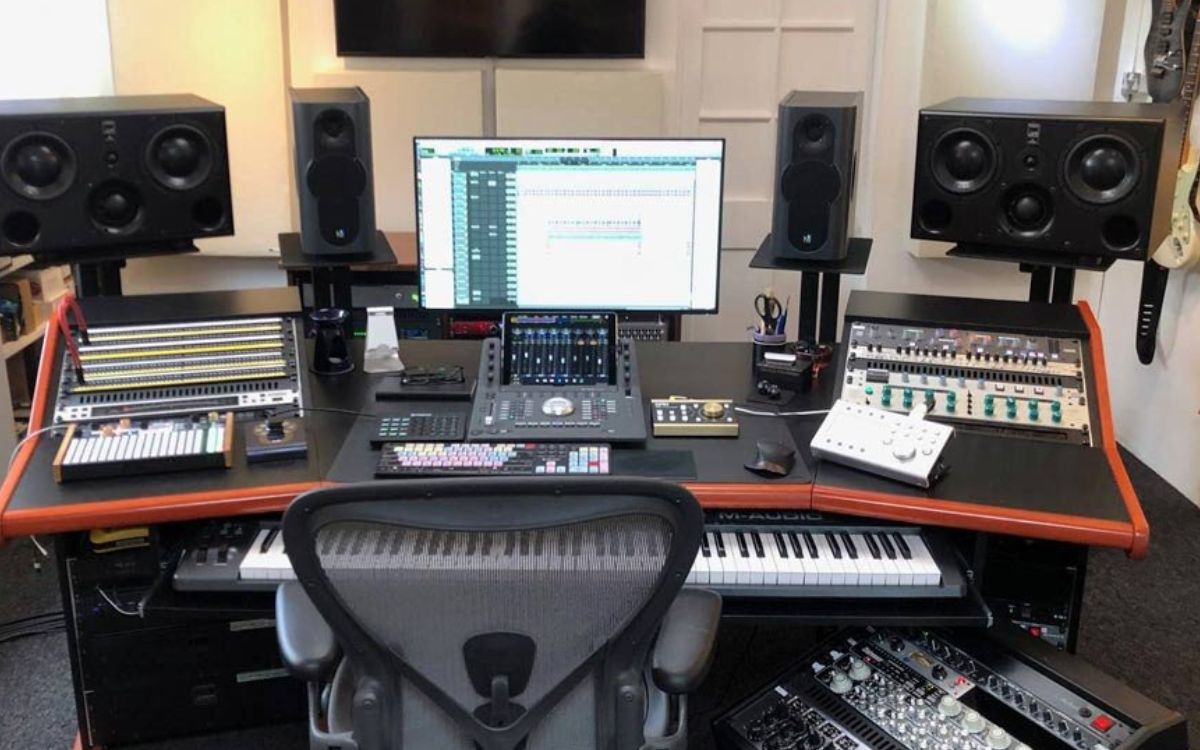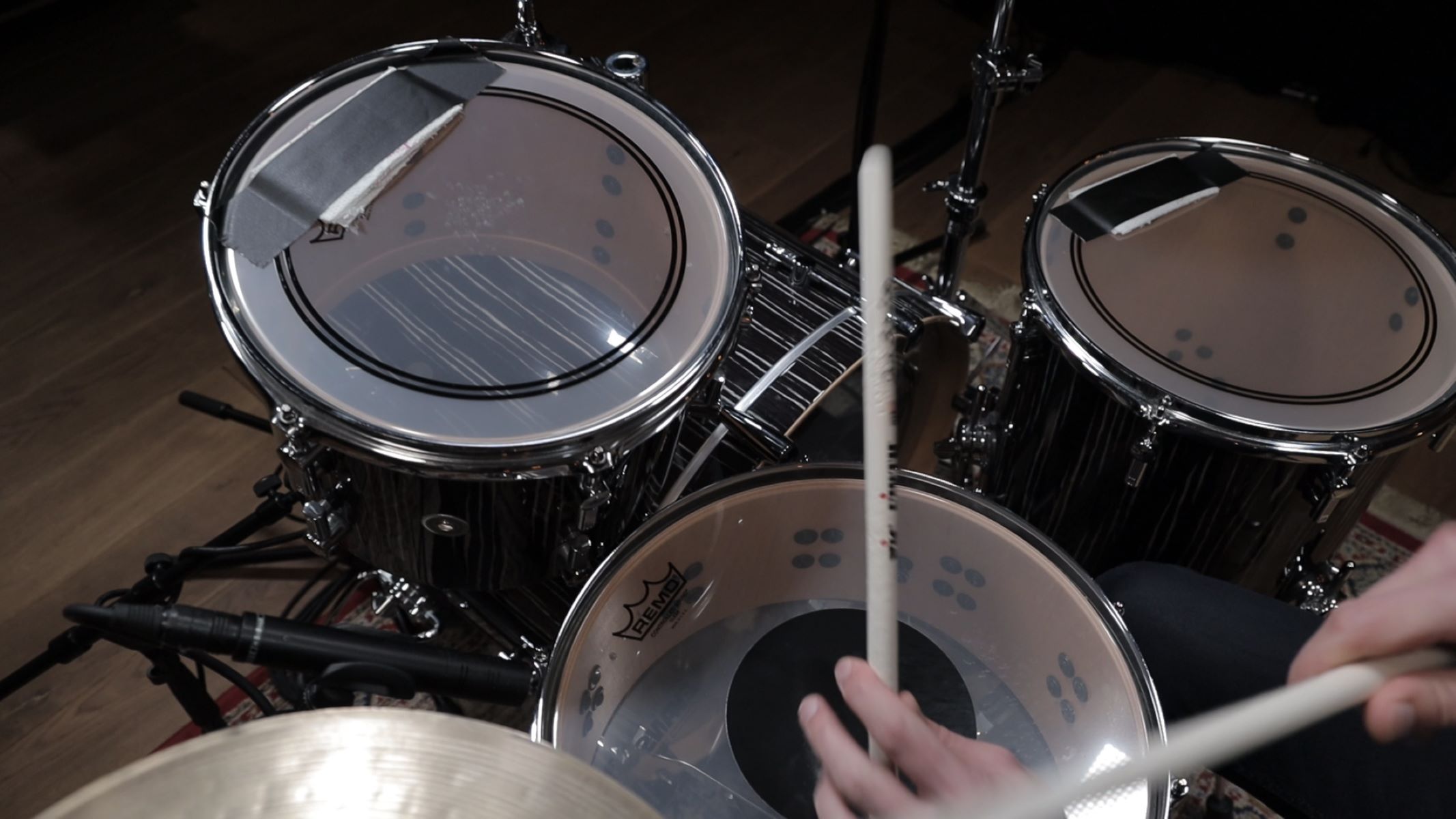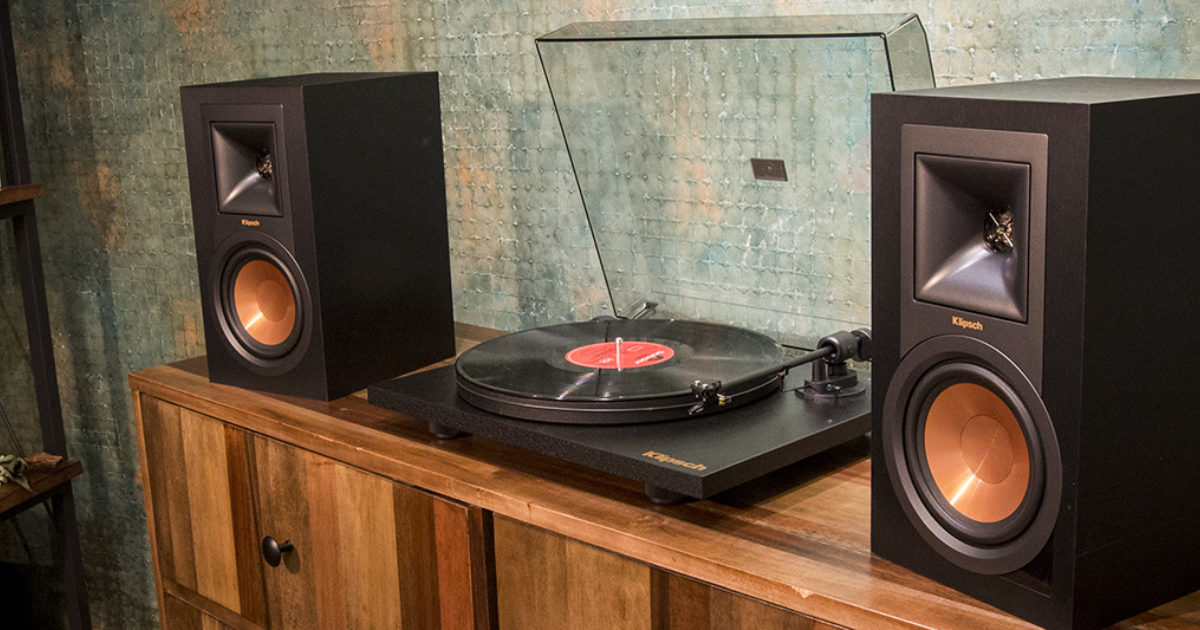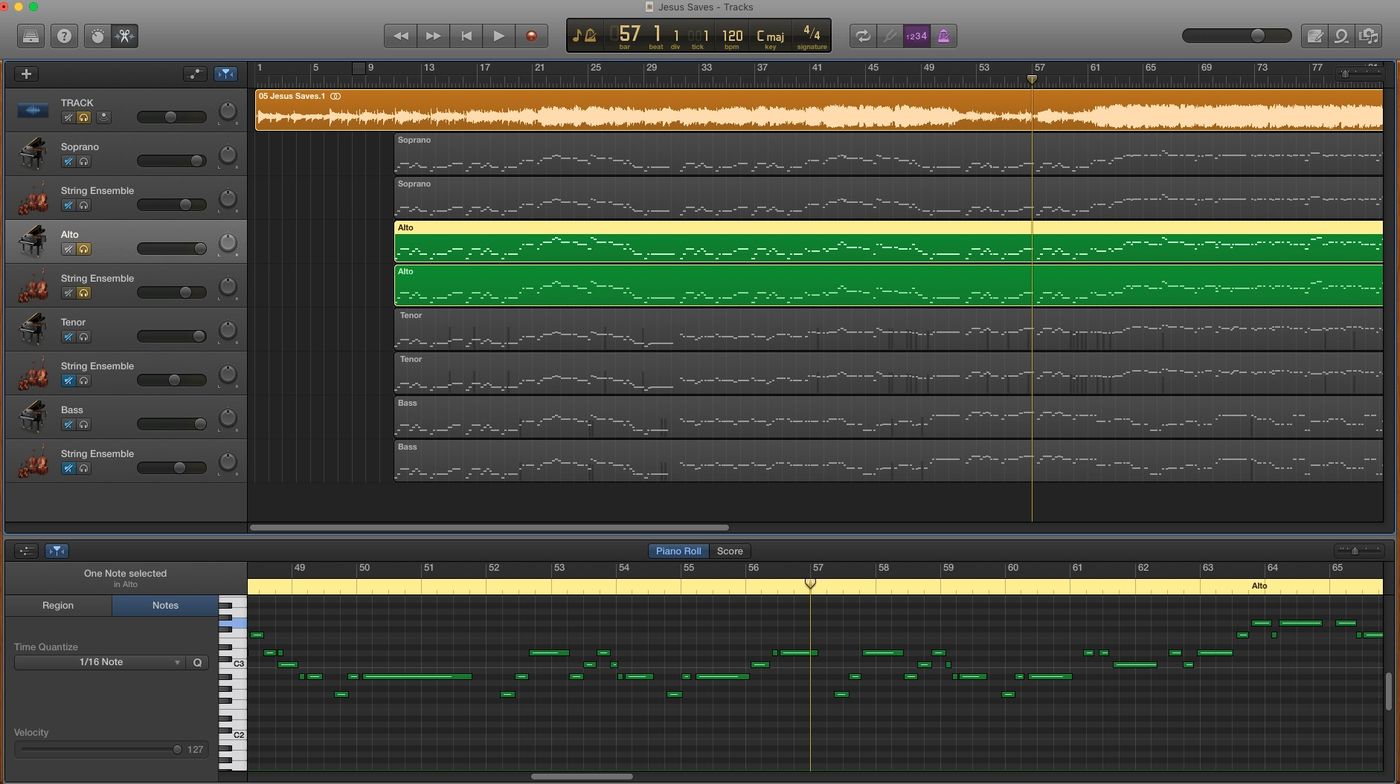Home>Production & Technology>Choir>How To Get A Choir Sound


Choir
How To Get A Choir Sound
Modified: February 23, 2024
Learn how to achieve a stunning choir sound in your music production. Discover the best techniques and tools for creating rich and harmonious choir arrangements.
(Many of the links in this article redirect to a specific reviewed product. Your purchase of these products through affiliate links helps to generate commission for AudioLover.com, at no extra cost. Learn more)
Table of Contents
Introduction
Creating a captivating choir sound is an art form that requires a harmonious blend of voices, meticulous arrangement, and expert techniques. Whether you're a seasoned choir director or an aspiring musician looking to enhance your vocal ensemble, mastering the intricacies of achieving an exceptional choir sound is a gratifying journey. This article will delve into the fundamental aspects of crafting a mesmerizing choir sound, offering valuable insights into selecting the right voices, arranging vocal parts, refining rehearsal techniques, optimizing microphones and acoustics, and employing effective mixing and mastering methods.
Embarking on the quest to achieve an impeccable choir sound entails a deep appreciation for the unique qualities of each individual voice and the collective synergy that arises when they harmonize. By carefully choosing the voices that will comprise your choir, you lay the foundation for a rich and dynamic vocal ensemble. Furthermore, the process of arranging these voices in a harmonious and complementary manner is pivotal in creating a cohesive and resonant choir sound.
The journey to achieving a remarkable choir sound is also intertwined with the art of rehearsing. Implementing effective techniques that foster unity, precision, and emotional expression among choir members is essential for elevating the overall performance. Additionally, understanding how to leverage microphones and acoustics to amplify and refine the choir's sound is crucial for delivering a captivating and immersive auditory experience. Finally, mastering the art of mixing and refining the choir's recorded performance ensures that the nuances and dynamics of the vocal ensemble are preserved and enhanced.
In the subsequent sections, we will explore each of these facets in detail, equipping you with the knowledge and techniques necessary to elevate your choir's sound to new heights. Whether you're seeking to infuse your choir's performances with soul-stirring resonance or aiming to achieve a pristine and balanced vocal blend, the following insights will serve as your compass on the journey to mastering the art of creating a captivating choir sound.
Choosing the Right Voices
The foundation of a captivating choir sound lies in the careful selection of voices that will comprise the ensemble. Each voice brings a unique timbre, range, and tonal quality, contributing to the overall tapestry of sound. When choosing voices for a choir, it's essential to consider a diverse range of vocal characteristics, including soprano, alto, tenor, and bass, each playing a pivotal role in creating a harmonious blend.
The first step in selecting the right voices is to assess the individual vocal qualities of potential choir members. Sopranos typically possess bright and soaring vocal ranges, while altos offer rich and warm tones. Tenors bring a resonant and versatile quality to the ensemble, and basses provide a solid foundation with deep and robust timbres. It's crucial to identify singers who embody these vocal traits, ensuring that the choir achieves a balanced and cohesive sound across its vocal sections.
Furthermore, beyond vocal range and timbre, the emotional expressiveness and dynamic range of each singer are equally important considerations. A choir comprised of singers who can convey a wide spectrum of emotions through their vocal delivery adds depth and nuance to the ensemble's sound. Additionally, the ability of individual voices to blend seamlessly with others is paramount in creating a unified and resonant choir sound.
In addition to individual vocal qualities, the collective synergy of the voices must also be taken into account. The ability of choir members to listen and adapt to one another, creating a harmonious and unified sound, is a defining factor in the success of the ensemble. A choir that comprises voices capable of blending and resonating with one another will inherently possess the potential to achieve a captivating and expressive sound.
Ultimately, the process of choosing the right voices for a choir is a delicate balance of technical proficiency, emotional depth, and collective synergy. By carefully curating a diverse ensemble of voices that complement and enhance one another, choir directors and musicians set the stage for the creation of a mesmerizing and immersive vocal experience. The harmonious interplay of individual vocal qualities and the collective synergy of the ensemble form the cornerstone of a captivating choir sound, laying the groundwork for the artistic journey that lies ahead.
Arranging the Voices
Arranging the voices within a choir is akin to orchestrating a symphony of sound, where each vocal part harmonizes and intertwines to form a cohesive and resonant whole. This process involves meticulous attention to detail, an acute understanding of vocal dynamics, and a keen sense of musicality. At the heart of arranging voices lies the art of crafting harmonies, counterpoints, and vocal textures that elevate the choir's performance to new heights.
The first step in arranging voices is to comprehend the unique characteristics of each vocal section. Soprano, alto, tenor, and bass voices possess distinct tonal qualities and ranges, each contributing a vital layer to the choir's overall sound. By understanding the inherent strengths and capabilities of each vocal section, arrangers can craft arrangements that showcase the full spectrum of the choir's sonic potential.
Harmonizing voices involves creating chordal structures that blend seamlessly, resulting in lush and resonant harmonies. This process requires careful consideration of intervals, voicings, and voice leading to ensure that the harmonies are both melodically compelling and tonally balanced. Additionally, exploring the use of non-traditional harmonies and extended chords can add depth and complexity to the choir's sound, infusing the arrangement with a sense of richness and sophistication.
Incorporating counterpoints within vocal arrangements introduces a layer of intricacy and interplay among the different vocal sections. By weaving complementary melodic lines that intersect and intertwine, arrangers can create a tapestry of sound that is both captivating and dynamic. The artful integration of counterpoints enhances the depth and complexity of the choir's performance, inviting listeners into a world of musical dialogue and synergy.
Furthermore, manipulating vocal textures and dynamics within arrangements allows for the creation of evocative and expressive musical landscapes. Utilizing techniques such as divisi, where vocal sections divide into multiple parts, and dynamic contrast, arrangers can sculpt the choir's sound to evoke a wide range of emotions and moods. These subtle nuances in vocal textures elevate the arrangement, infusing it with a sense of depth and artistry.
In essence, arranging voices within a choir is a masterful endeavor that demands a deep understanding of vocal intricacies, a keen ear for musical expression, and a profound appreciation for the collective synergy of voices. By crafting harmonies, exploring counterpoints, and manipulating vocal textures, arrangers breathe life into the choir's performance, creating a sonic tapestry that resonates with beauty and artistry.
Rehearsing Techniques
Rehearsing techniques form the bedrock of a choir's journey towards achieving a captivating and cohesive vocal sound. The art of refining and perfecting the ensemble's performance through strategic and effective rehearsal methods is a testament to the dedication and artistry of both the choir director and its members.
The rehearsal process begins with establishing a shared vision and understanding of the musical piece or repertoire. This involves delving into the nuances of the composition, dissecting its thematic elements, and collectively immersing in the emotional landscape it seeks to convey. By fostering a deep appreciation for the musical narrative, choir members can infuse their performances with authenticity and emotional resonance.
Moreover, implementing vocal exercises and warm-ups tailored to the specific needs of the choir is integral to honing the ensemble's technical proficiency and vocal agility. These exercises serve to cultivate vocal precision, expand vocal range, and refine tonal quality, empowering choir members to deliver performances that are both expressive and technically adept.
In addition to technical exercises, rehearsal techniques that focus on unity and cohesion are paramount in elevating the choir's sound. Implementing exercises that emphasize listening, blending, and synchronization among choir members fosters a collective synergy that is essential for achieving a harmonious and balanced vocal blend. Furthermore, cultivating a deep sense of musical empathy and awareness within the ensemble nurtures an environment where each voice seamlessly intertwines with others, creating a unified and resonant choir sound.
The rehearsal process also involves delving into the emotional and interpretive aspects of the music. Exploring the narrative, emotional arcs, and thematic motifs of the composition enables choir members to infuse their performances with depth and expressive nuance. By encouraging a profound connection to the music's emotional core, choir directors can guide the ensemble towards delivering performances that resonate with authenticity and heartfelt emotion.
Ultimately, effective rehearsal techniques are a testament to the dedication, artistry, and collaborative spirit of the choir. By fostering a deep understanding of the music, refining technical proficiency, cultivating unity and cohesion, and embracing the emotional essence of the repertoire, choir members embark on a transformative journey that culminates in the creation of a captivating and resonant vocal ensemble.
Utilizing Microphones and Acoustics
The utilization of microphones and acoustics plays a pivotal role in shaping the sonic landscape of a choir's performance, offering the means to amplify and refine the ensemble's sound with precision and artistry. Understanding the nuances of microphone placement, acoustical considerations, and the interplay between technology and natural sound is essential for creating an immersive and captivating auditory experience.
When employing microphones for a choir, it is crucial to consider the unique acoustic properties of the performance space. The placement of microphones should be strategically determined to capture the full breadth and depth of the choir's sound while minimizing unwanted ambient noise. By leveraging techniques such as spaced pair or decca tree microphone setups, engineers can achieve a balanced and natural representation of the ensemble's sonic presence, allowing for a faithful reproduction of the choir's vocal intricacies.
Furthermore, the acoustics of the performance venue play a significant role in shaping the choir's sound. Understanding the reverberation characteristics, reflective surfaces, and overall sonic profile of the space enables engineers to tailor the microphone setup and sound reinforcement to complement and enhance the choir's performance. By optimizing acoustics through the strategic placement of sound-absorbing and diffusive materials, engineers can create an environment that enriches the choir's sound, fostering clarity and resonance.
In addition to microphone placement and acoustical considerations, the judicious use of sound reinforcement technology can further refine the choir's sonic presence. By employing techniques such as equalization, dynamic processing, and spatial effects, engineers can sculpt the choir's sound with precision, ensuring that each vocal nuance is preserved and amplified with artistry. Furthermore, the integration of monitoring systems allows choir members to maintain a cohesive and balanced performance, fostering a heightened sense of musical awareness and unity.
Ultimately, the art of utilizing microphones and acoustics in the context of a choir's performance is a delicate balance of technical precision and artistic finesse. By understanding the interplay between microphones, acoustics, and sound reinforcement technology, engineers can craft an immersive and captivating sonic landscape that elevates the choir's performance to new heights, enveloping audiences in a world of resonant beauty and artistry.
Mixing and Mastering Techniques
Crafting a captivating choir sound culminates in the meticulous process of mixing and mastering, where the intricacies of the ensemble's performance are refined and polished to achieve sonic excellence. The art of mixing and mastering is a testament to the dedication and expertise of audio engineers, who employ a myriad of techniques to elevate the choir's sound to new heights.
The mixing stage encompasses the artful blending and balancing of individual vocal tracks, creating a cohesive and harmonious sonic tapestry. Engineers meticulously adjust the levels, panning, and equalization of each vocal part, ensuring that the choir's performance is presented with clarity, depth, and spatial richness. By delicately sculpting the tonal characteristics of each voice and harmonizing their collective presence, engineers breathe life into the choir's sound, infusing it with a sense of resonance and artistry.
Moreover, the integration of reverberation and spatial effects during the mixing process adds a layer of depth and immersion to the choir's performance. By carefully tailoring the ambience and spatial positioning of the vocals, engineers create a sonic landscape that envelops listeners in a world of resonant beauty and emotive power. The judicious use of reverberation imparts a sense of spatial depth and grandeur to the choir's sound, evoking a captivating sense of presence and ambiance.
Moving to the mastering stage, engineers apply the final touches to the choir's performance, refining its sonic characteristics with precision and finesse. Through the application of dynamic processing, equalization, and spectral enhancement, engineers ensure that the choir's sound is balanced, polished, and optimized for a captivating listening experience. The mastering process also involves fine-tuning the overall tonal balance and dynamic range of the choir's performance, ensuring that its nuances and expressive qualities are preserved and accentuated.
Furthermore, the integration of mastering techniques such as stereo enhancement and multiband compression allows engineers to elevate the choir's sound with a sense of spatial width and sonic cohesion. By delicately sculpting the stereo image and dynamics of the ensemble, engineers create a captivating and immersive sonic experience that resonates with depth and clarity.
In essence, the art of mixing and mastering techniques is a testament to the dedication, expertise, and artistry of audio engineers, who meticulously refine and elevate the choir's performance to new heights of sonic excellence. Through the delicate interplay of mixing and mastering techniques, engineers craft a captivating and resonant sonic landscape that invites listeners into a world of emotive power and artistic beauty.











